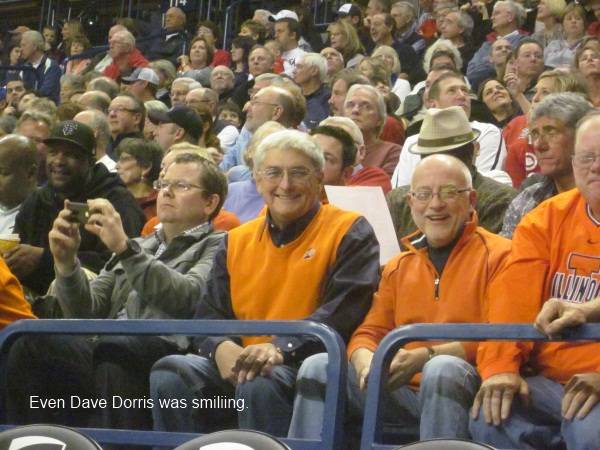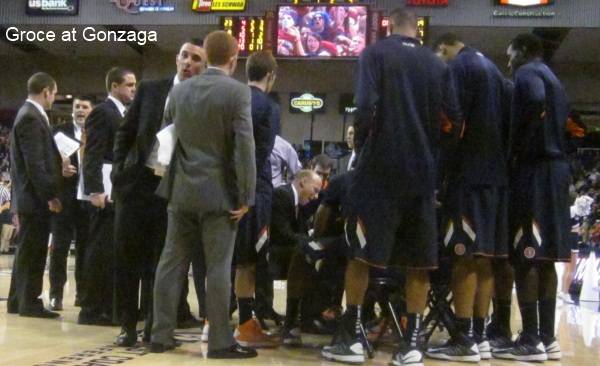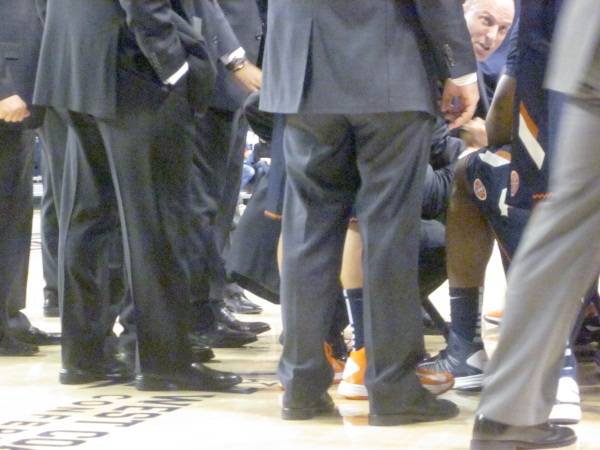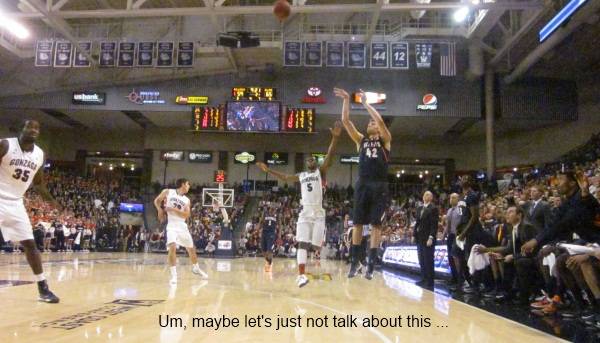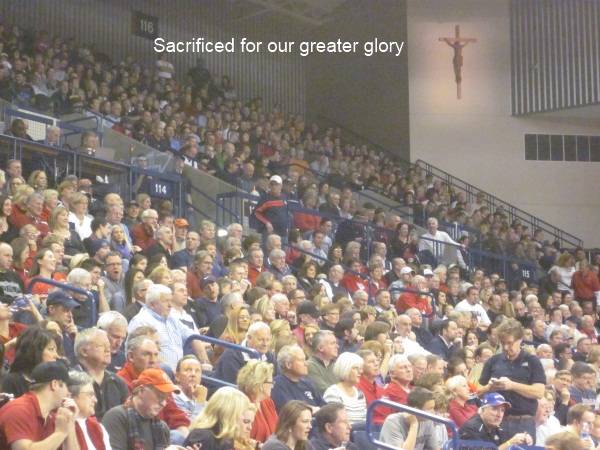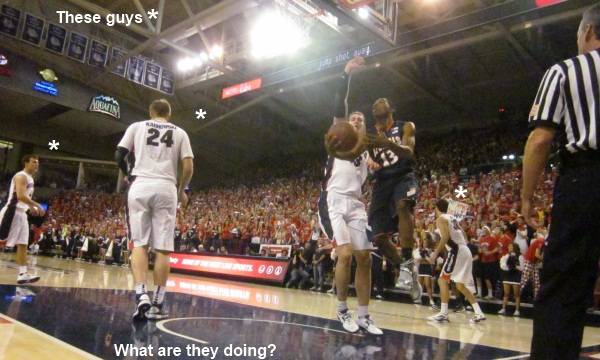You may have noticed that Smile Politely rarely bothers to report routine stuff like the final score, statistics, and other readily searchable data that newspapers include by necessity. We assume you can Google that stuff.
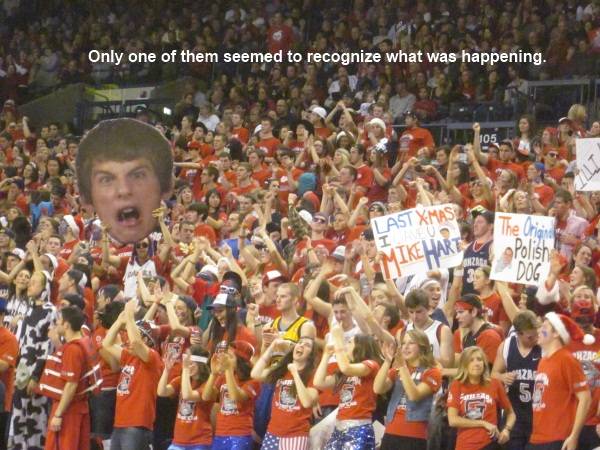
Let’s also assume that you’ve already learned how Illinois beat Gonzaga Saturday in Spokane. I’ll even leap to the conclusion that you’ve formed your own strong opinions about this game.
Because this game will, rightly or wrongly, achieve milestone status in the history of the program; I’m even going to guess that everyone reading this account (except Isaac) knows every detail of the game as it played out — from Tent City, to Elias Harris’s opening three-point romp through the lane, to Brandon Paul’s aeronautical assault on the rims, to the national media’s grudging admission that Illinois may be “for real.”
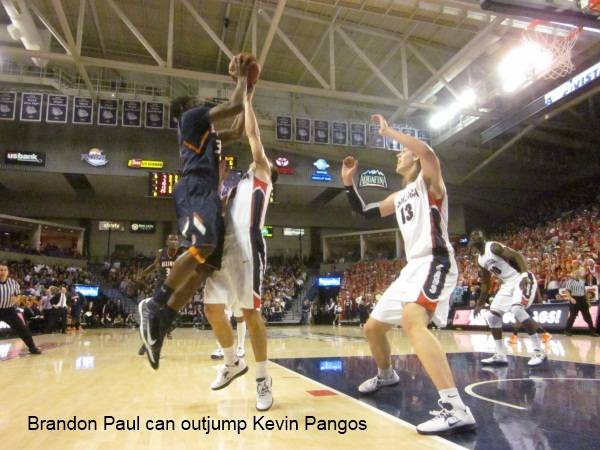
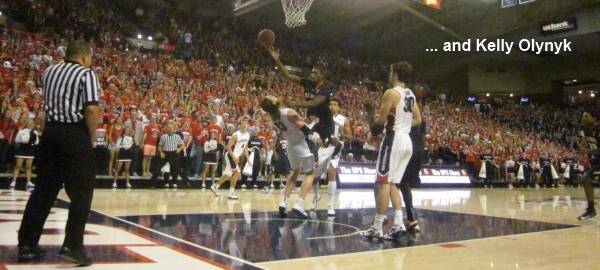
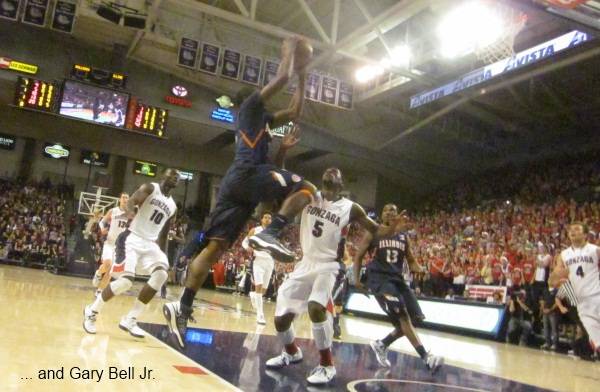
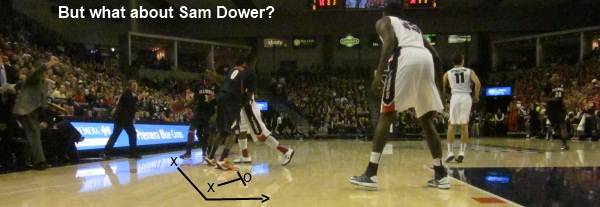
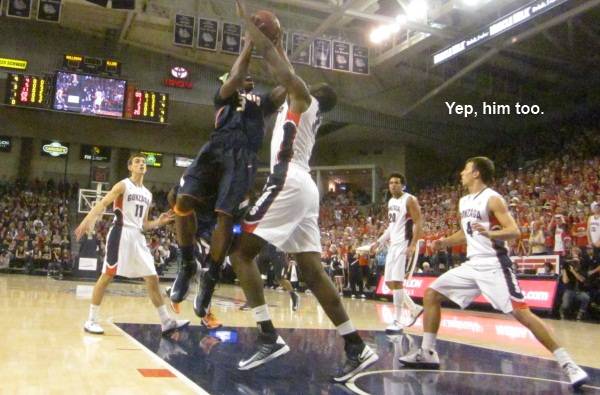
I’m about 35,000 feet above the Wyoming Rockies, and I haven’t watched the replay, so I don’t know whether anyone talked about the Big Ten referees — good? bad? advantageous to either team? — or why Gonzaga played so much man-to-man defense. I assume message boards will beat those topics to death between now and Tuesday. I plan to read everyone’s opinion because I can’t reckon either answer myself.
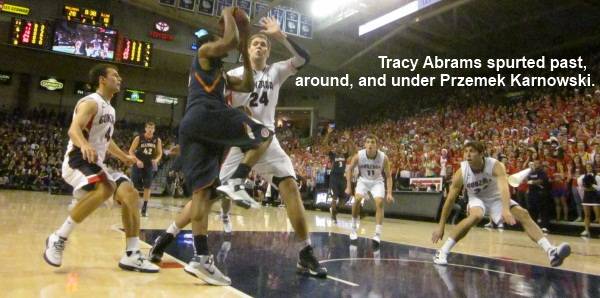
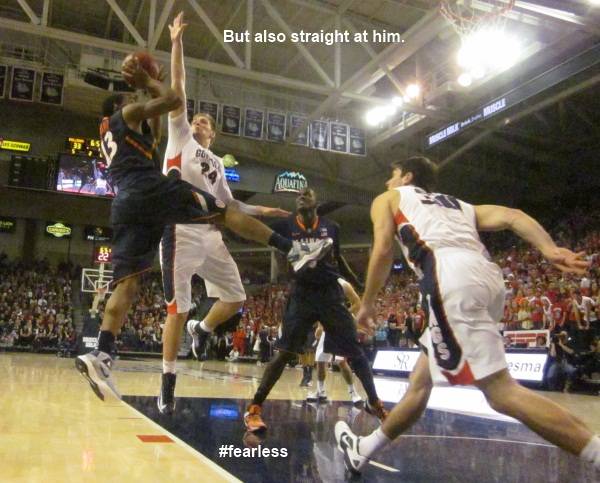
Here’s what I do know. Larry Scirotto watched the Zags grab and hold Illini bigs. But Illini guards drew fouls nearly every time they drove the lane — unless the major contact failed to prevent a made basket, in which case considerable violence was again ignored.
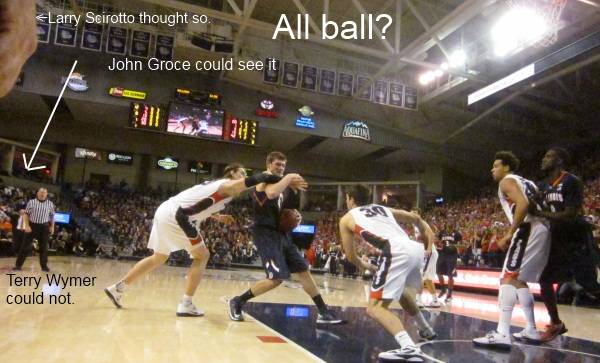
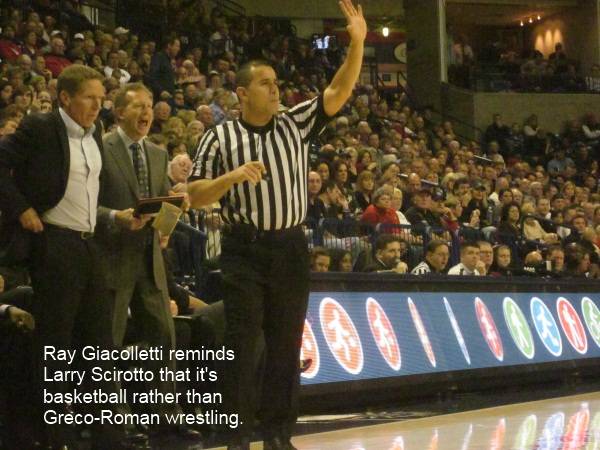
Scirotto probably never played basketball at an organized level, but he may be an Olympic wrestler. He’s got the build for it. About 5-foot-4 and fulla muscles. I assumed he was calling a Greco-Roman match, because both teams held each other, a lot. But Scirotto never blew his whistle, so long as the contact occurred above the belt. Thus, when Brandon Paul climbed over various Bulldogs, and they grabbed his legs, Scirotto blew the whistle.
I think Scirotto called the game evenly. I know Elias Harris and about 2,000 hyped-up undergrads screamed bloody murder when Harris was knocked to the floor on a late first half rebound opportunity.
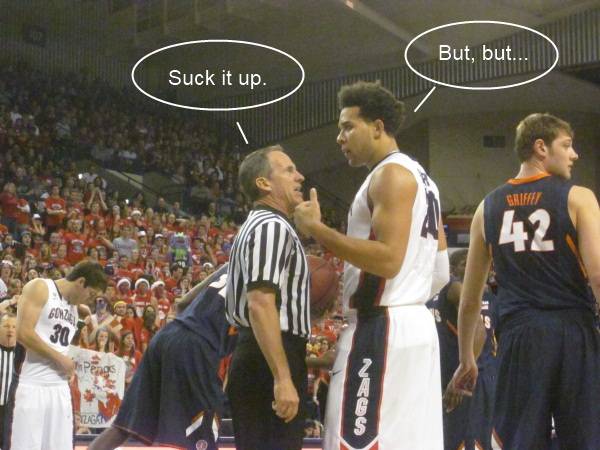
I was laughing about Scirotto’s eccentric performance with Gonzaga’s priest in the media room. “I’ve never seen a guy run under the players before,” mused Fr. Craig Hightower.
Presumably, Fr. Hightower was in the media room to bless the halftime offering, steamtable trays of a) cheesy tato fingers and b) cheesy chili (and ketchup). The pre-game meal was cheesy rotini in mystery sauce. “Do you always have a second course?” I asked.
“Always,” he confirmed.
It’s one of the curious idiosyncrasies at Gonzaga, and perhaps the West Coast Catholics as a whole. Here are some more. Their sports information people staff remains cloistered, incommunicado, until gameday. But then they deliver your credential to your hotel.
The media room modem is slightly slower than entry-level DSL. So YouTube’s uploader needs 71 minutes to complete a 200mb video file. As we know, the Vatican has not always been responsive to new ideas about the way the world works, and they’re loathe to disseminate information from within. At Illinois, home of the National Center for Supercomputing Applications, a gigabyte loads in about 90 seconds.
Another anomaly of Gonzaga’s media operations: They have no interviews area. Major college arenas dedicate a particular room to wired postgame press conferences. The Kohl Center features a permanent press room with XLR and TRS audio jacks, and power outlets empaneled at every seat. The Breslin Center provides only a temporarily curtained and carpeted area under the grandstands. Old buildings (The Barn in Minneapolis and Welsh-Ryan in Evanston) offer tiny rooms in odd corners of the building. They vary wildly in facilities and operational capabilities, but they almost always exist.
The McCarthy Athletic Center features nothing of the sort. Instead of the usual routine, in which a team’s SID escorts head coach and top performers to a wired conference area, this was more like tracking your co-workers through office corridors, hoping to get details of the ongoing project. There was even a water cooler and a fax machine.
OKAY WE’RE STILL WAITING TO DEPLANE, SO I’LL TALK ABOUT THE GAME
Brandon Paul’s finest performance could not have happened if his teammates didn’t neutralize the opposition. It’s a sports cliché, but certainly true in this case. Sam McLaurin (again) features at the top of the unsung and statistically negligible heroes lists.
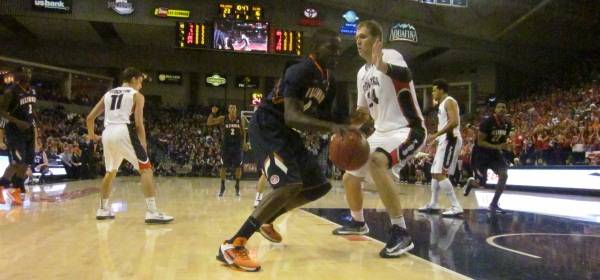
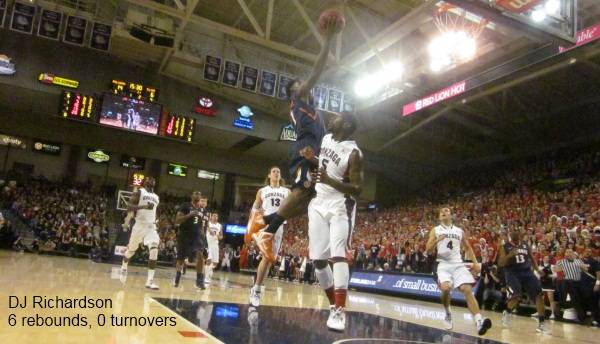
DJ Richardson drove the lane more than “usual” because that’s what the Zags defense invited. He also performed his more “usual” role of drawing the defense to the perimeter.
Tracy Abrams kept his head in the game, and righted himself after commiting three unconscionable errors: a no-look pass to Kevin Pangos in the back-court, a ten-second violation, and an attempted isolation against Kelly Olynyk (who no matter how goofy is still seven feet tall), which ended with an awful fadeaway.
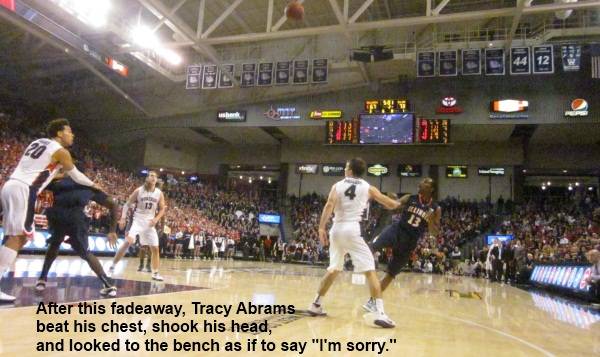
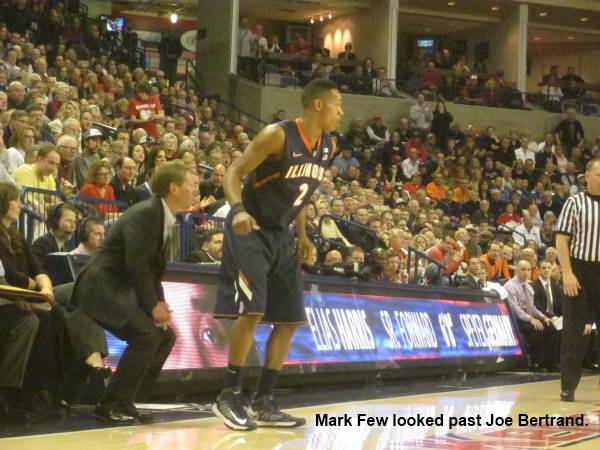
The Zags reacted to Joe Bertrand as if someone forgot to attach his profile to the scouting report. They seemed unaware how high he jumps, that he shoots from the perimeter, that he can run the point.
Myke Henry stroked two back-breaking daggers from the wing, and performed spot duty at power forward when Griffey and Egwu fouled out. When Dustin Ford called for Henry, Paris Parham reached up and grabbed Myke’s arm. He held Myke by his side for a moment, and then reached his arms around Myke’s shoulders, while barking in his ear.
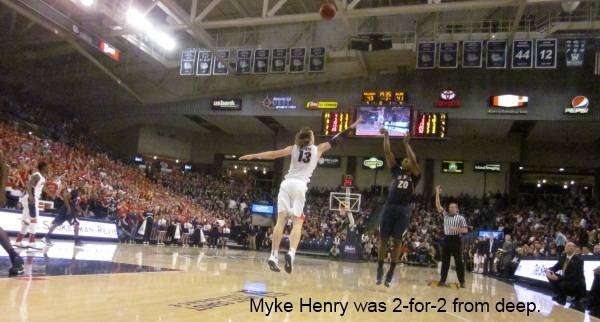
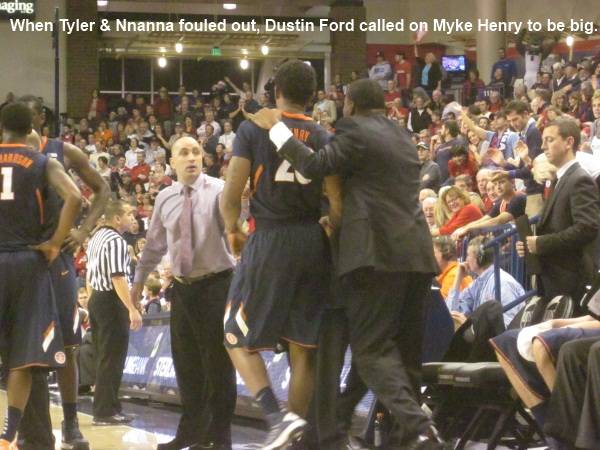
I don’t know whether the assistants had different ideas about whom to sub-in, or whether Parham wanted to give Myke explicit instructions or encouragement. I’ll have to remember to ask.
Even Abe Djimde and Mike Shaw performed spot defensive assignments late in the first half, as John Groce substituted through consecutive possessions, offense for defense, hoping to keep his starters from foul troubles. In the end, Dave Dorris smiled. To my knowledge, this has never happened before.
